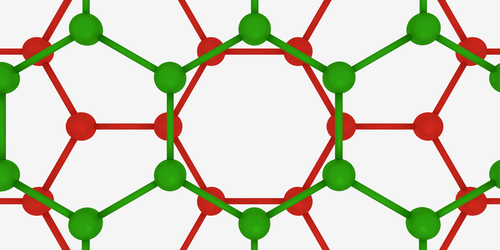A Conceptual Cousin for Twisted Bilayer Graphene
In 2018, physicists discovered an unusual superconductor, consisting of two layers of graphene atoms twisted at an angle of relative to one another. This so-called magic-angle twisted bilayer graphene has similar superconducting states to cuprate superconductors but it is chemically simpler, and its properties are easier to tune. Now, Zhi-Da Song of Peking University and Bogdan Bernevig of Princeton University link the electron behavior in twisted bilayer graphene to that in other systems known as heavy fermion materials [1].
The electronic properties of twisted bilayer graphene come from the contradictory nature of its electrons. Experiments suggest that one set of its electrons, so-called itinerant electrons, move about freely, giving the material its conduction properties. Another set, so-called localized electrons, stay still, with their motion constrained by strong potential wells. The presence of these two types of electrons allows physicists to easily switch the material’s behavior from superconducting to insulating, but they don’t yet understand why. To help in this quest, Song and Bernevig turned to the heavy fermion model.
Others first used this model to describe heavy fermion materials, which are compounds that contain rare-earth elements bonded to lighter elements. Like twisted graphene, heavy fermion materials contain localized and itinerant electrons. Performing exact calculations, Song and Bernevig found that they could describe the electronic band structure of twisted graphene using the heavy fermion model. They found that parameters of twisted-graphene’s excitation spectra correspond directly to parameters of the heavy fermion model. The model also explains the insulating states of the material. The team says that the model provides a framework to study unconventional superconductivity in graphene, as well as in other materials made of two twisted layers.
–Sophia Chen
Sophia Chen is a freelance science writer based in Columbus, Ohio.
References
- Z. D. Song and B. A. Bernevig, “Magic-angle twisted bilayer graphene as a topological heavy fermion problem,” Phys. Rev. Lett. 129, 047601 (2022).




